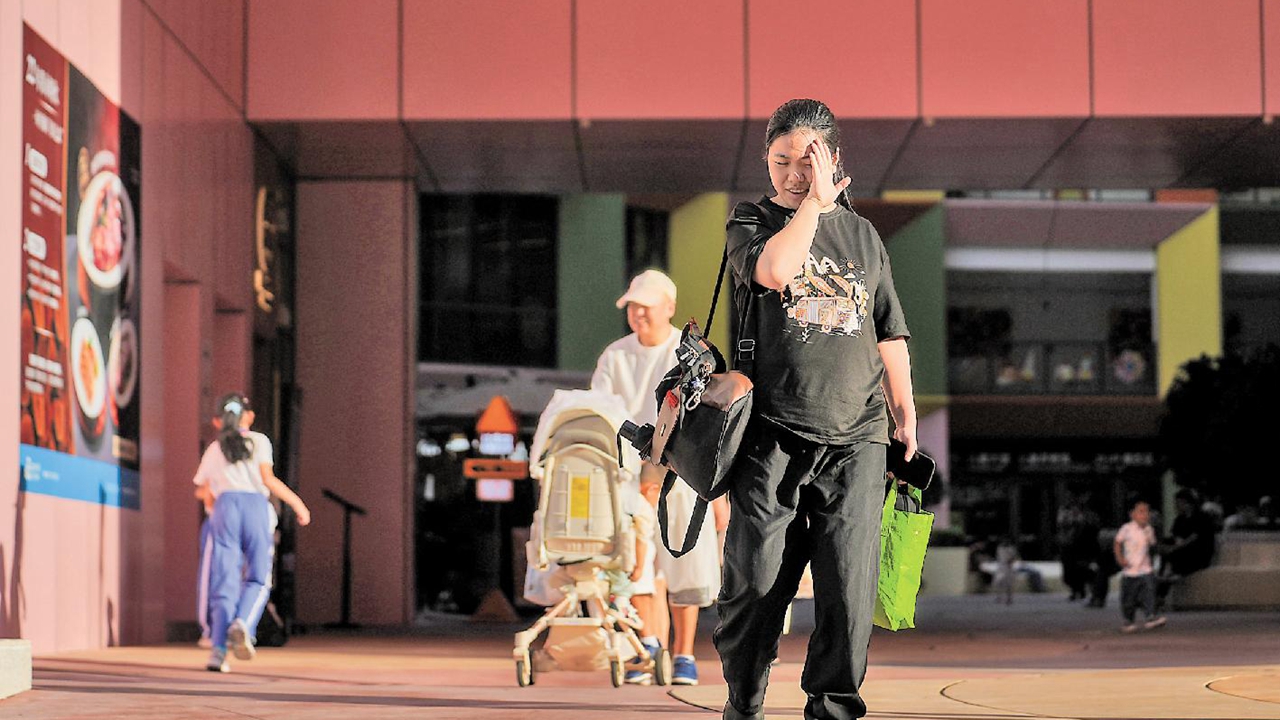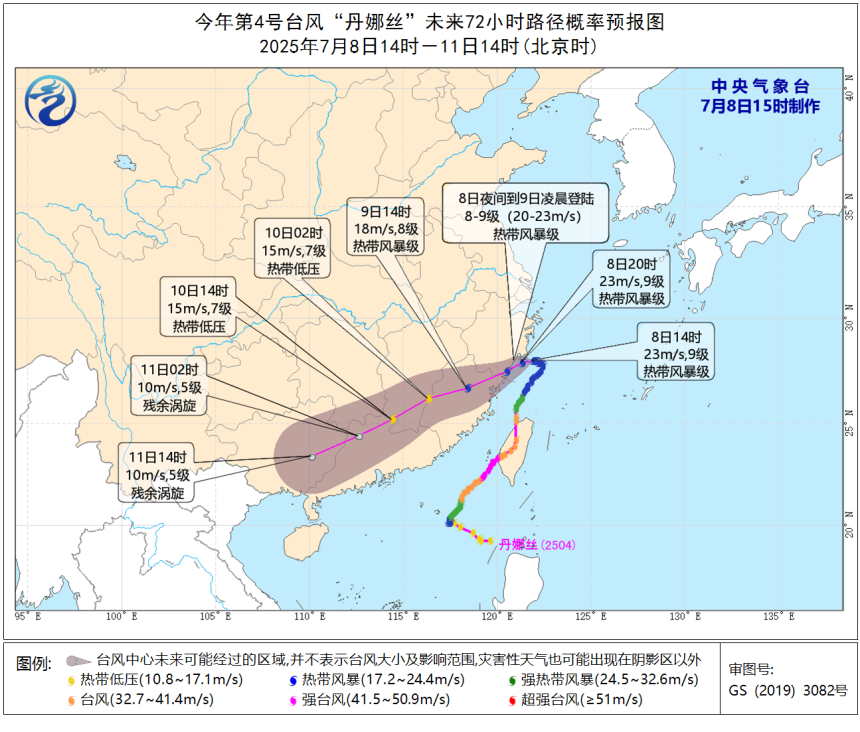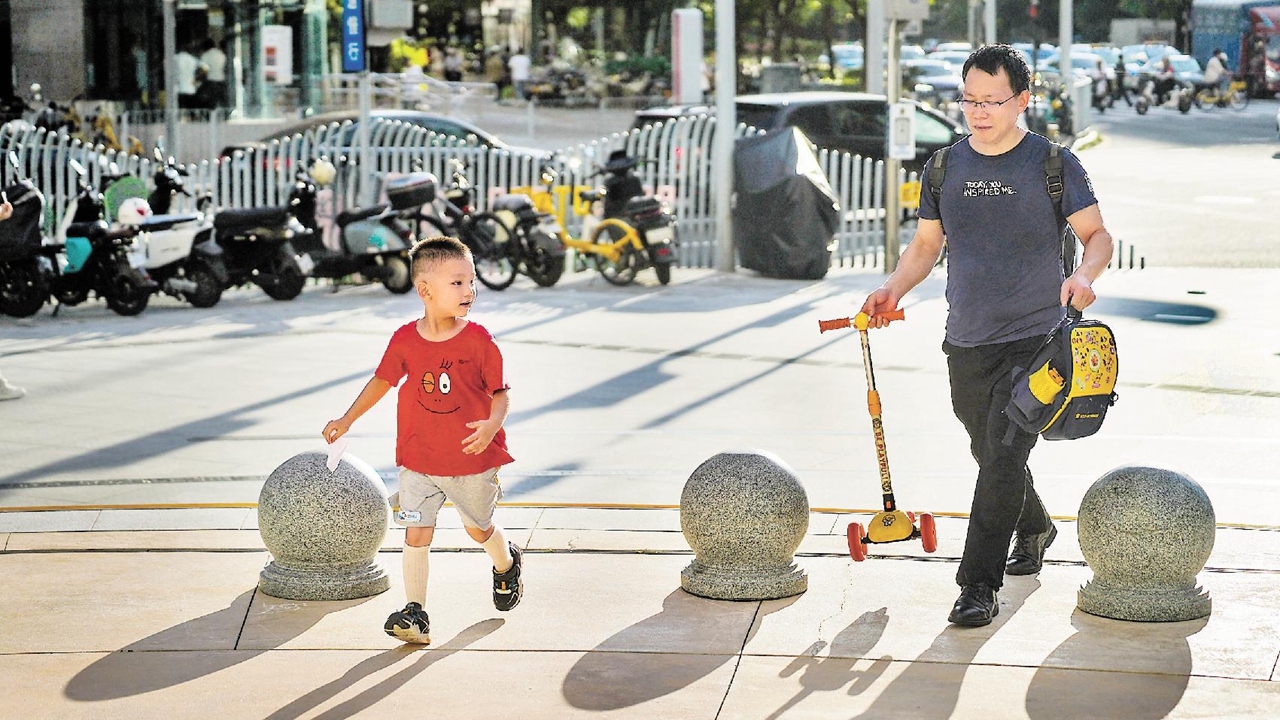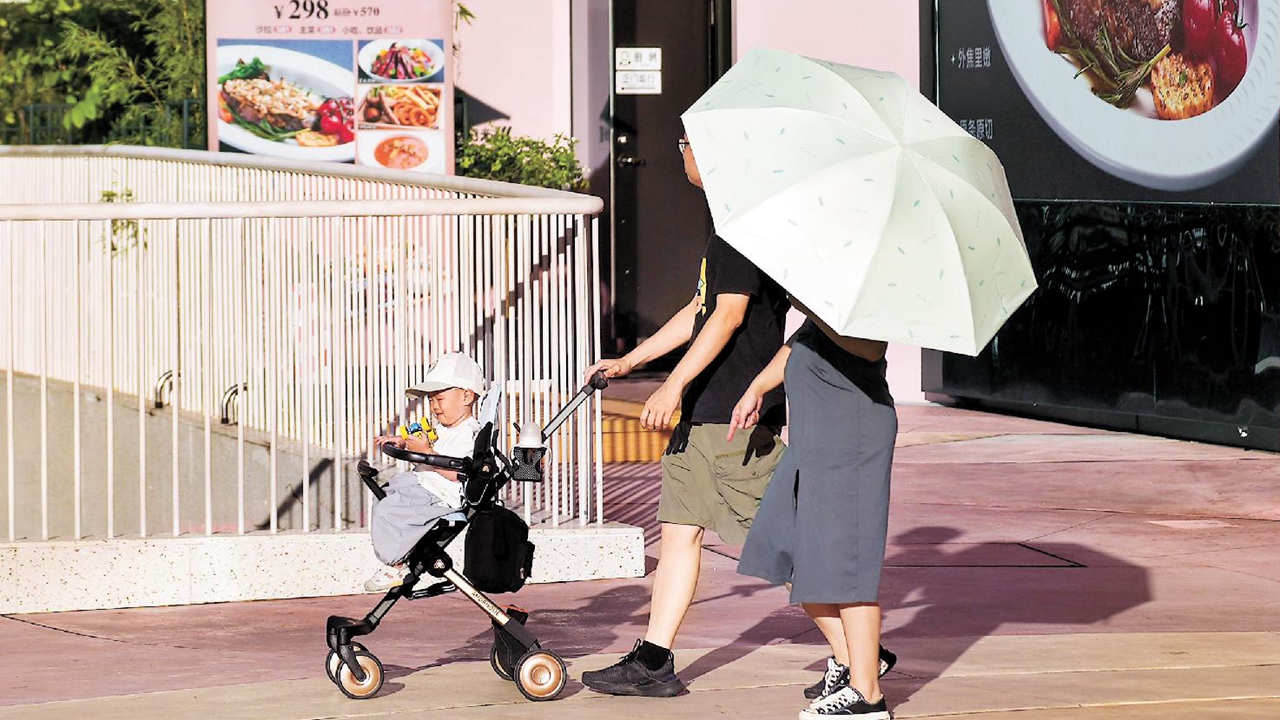City under heat alert as Typhoon Danas approaches
Writer: | Editor: Lin Qiuying | From: Shenzhen Daily | Updated: 2025-07-09
The city's orange heat alert — the second-highest level — remained in effect yesterday, but relief is on the way. Today's forecast calls for partly cloudy skies, scattered thunderstorms, and a high of 32 degrees Celsius.

A young woman shields her face with her hand while walking under the blazing sun in Jingtian, Futian District. Photos by Yan Wenting unless otherwise stated
The wet weather is expected to continue, with frequent rain and thunderstorms from Thursday through Saturday. Temperatures will drop to a low of 29 degrees Celsius on Friday before beginning to climb again on Saturday.
While the rain will break the heat, residents are advised to stay alert for potential hazards such as flash flooding or lightning during the storms.
Typhoon Danas takes rare ‘Z-shaped’ turn

The projected 72-hour path of Typhoon Danas, from yesterday through July 11. Shenzhen Meteorological Bureau
The shifting weather is being driven in part by Typhoon Danas, the fourth typhoon of the season, which made a dramatic and rare “Z-shaped” turn after its initial landfall in Taiwan on Monday. Meteorologists say the unusual trajectory is due to fluctuations in the subtropical high-pressure system that continues to steer the storm.
According to the National Meteorological Center, Danas is expected to weaken after making landfall between Zhejiang and Fujian provinces early tomorrow as it moves southwest, with remnants likely reaching Guangdong Province — including Shenzhen.

A satellite image shows Typhoon Danas approaching Zhejiang and Fujian provinces as of 11:45 a.m. yesterday, with dense cloud cover spreading across southeastern China. National Meteorological Center
Locally, the remnants of Danas, combined with the southwest monsoon, are forecast to trigger a more significant rainfall event from July 10 to 12. The Shenzhen Meteorological Observatory has urged residents to take precautions against flooding and potential travel disruptions.
Heatwave coincides with ‘Minor heat’ solar term A father and his son walk in the sunshine in Futian District Monday.
A father and his son walk in the sunshine in Futian District Monday.
The current heatwave, which has seen temperatures soar above 35 degrees Celsius, coincided with the start of the traditional Chinese solar term "Minor heat" (小暑) on Monday. Marking the start of the year's hottest period, Minor Heat will continue through July 21.
This intense heat is already taking a toll on public health. A sharp increase in heat-related illnesses has been reported, with local hospitals treating numerous cases of heatstroke.
Hospitals treating severe heatstroke cases

Pedestrians use umbrellas and hats to shield themselves from the scorching sun.
The Second People's Hospital of Shenzhen, for example, treated several severe cases over the weekend. In one instance Sunday evening, a 22-year-old man was rushed to the hospital after spending several hours in a park without water.
When admitted, his body temperature had reached 39.9 degrees Celsius, and he exhibited critical symptoms such as slurred speech, spasms in both hands, and confusion. After emergency treatment, the patient is out of danger and is gradually recovering.
"This was a typical case of severe heatstroke," said Dr. Xiao Xiaoyong from the hospital. He emphasized that the patient was fortunate to have been taken to the hospital within two hours of experiencing discomfort, noting that any further delay in treatment could have been disastrous.
Dr. Xiao explained that signs of heat exhaustion include feeling overheated, dizziness accompanied by nausea and vomiting, lethargy, lack of concentration, and general muscle weakness.
Heatstroke can lead to organ failure. Statistics indicate that for every 10 minutes treatment of severe heatstroke is delayed, the mortality rate increases by 10%.
How to prevent heatstroke:
Avoid outdoor activities between 10 a.m. and 4 p.m.
Drink beverages with electrolytes to replenish fluids during heat exposure.
Wear loose, light-colored clothing and a hat when going out.
Ensure good ventilation indoors, and use air conditioning.